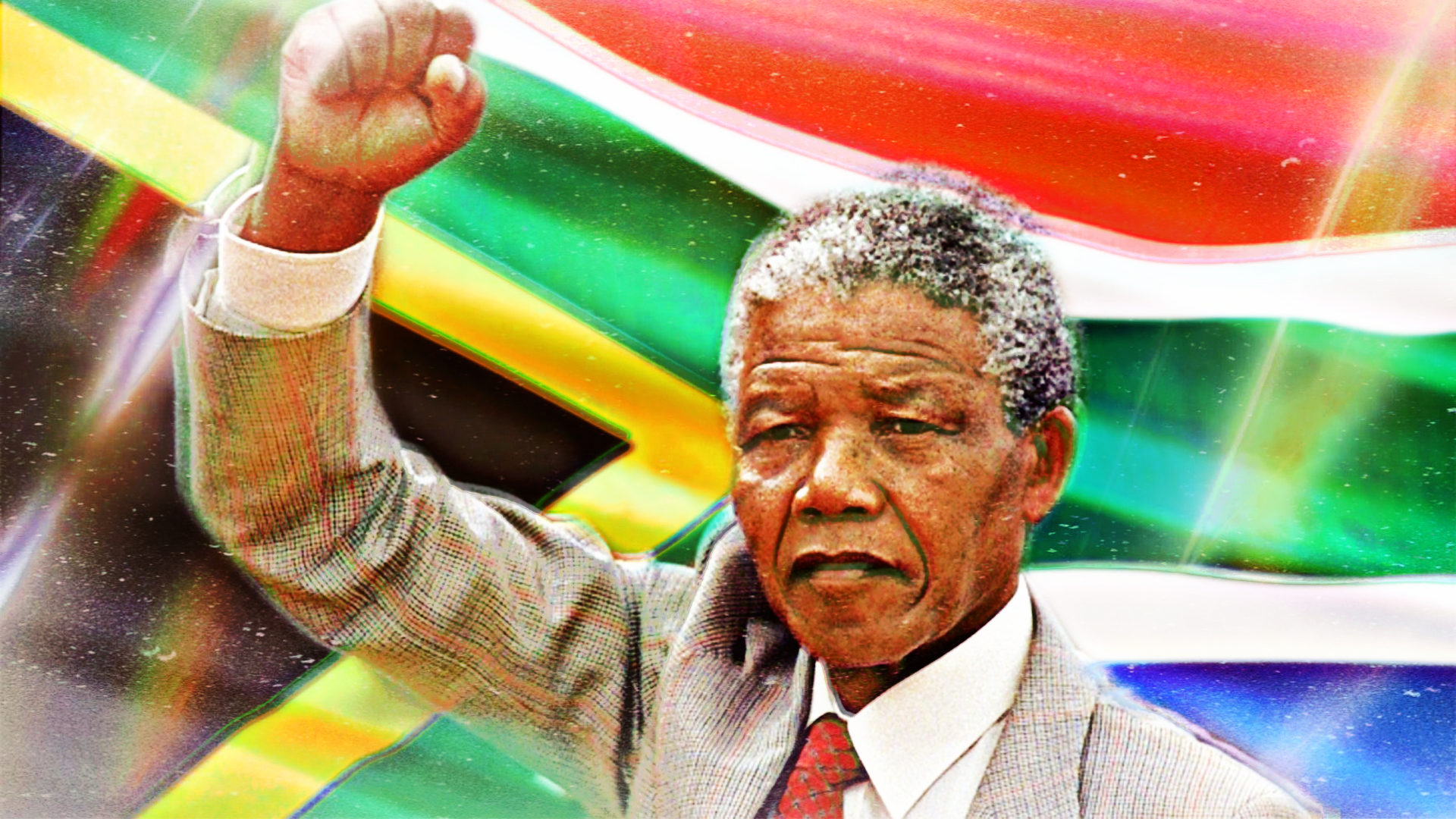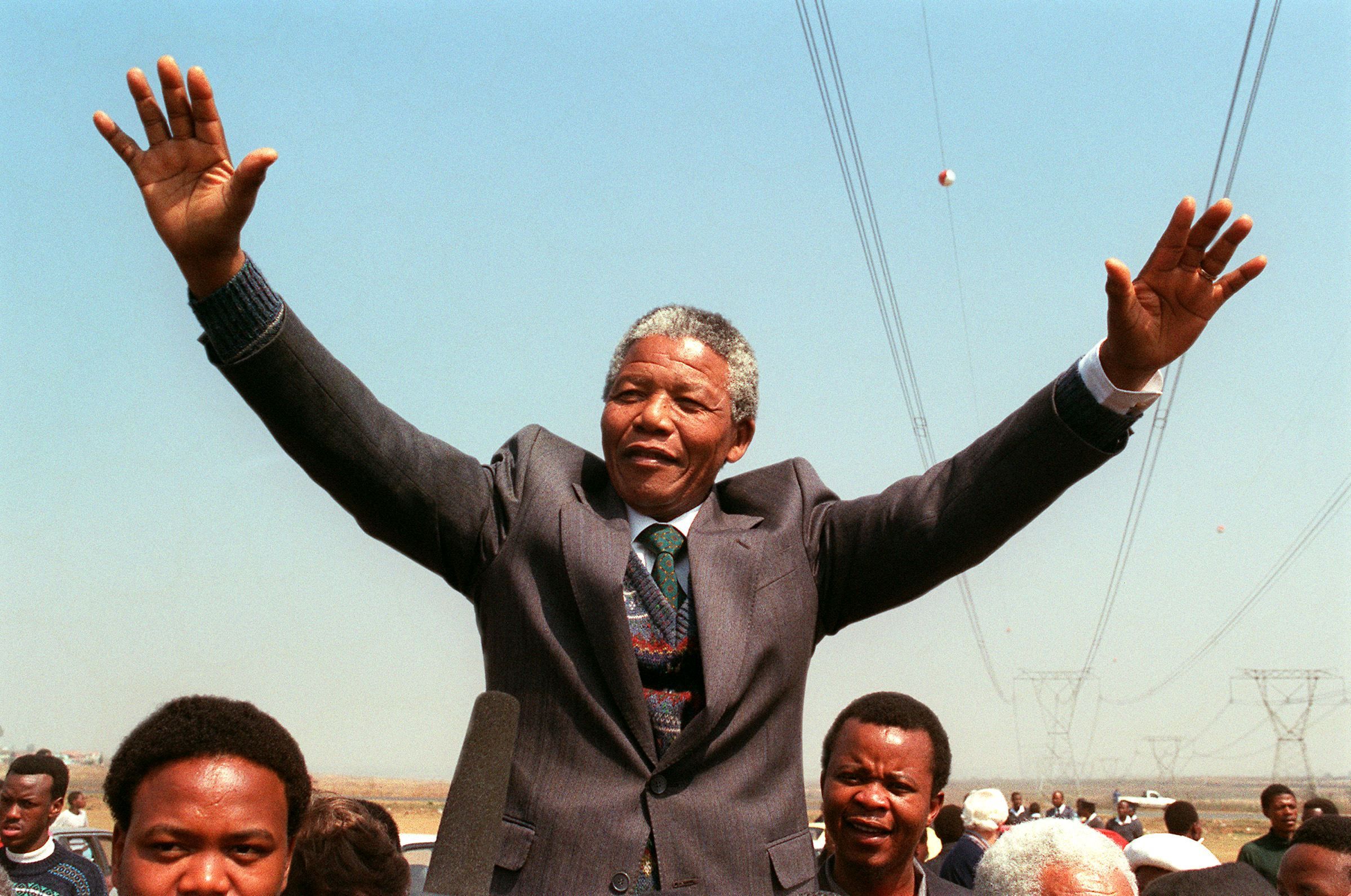Nelson Mandela

Illustrated portrait of Nelson Mandela standing tall, half in a prison uniform and half in a presidential suit, symbolizing his journey from prisoner to president.
Biography
Nelson Mandela was born in 1918 in the rural village of Mvezo, South Africa. Though his birth name was Rolihlahla, a teacher gave him the name 'Nelson' on his first day of school. A member of the Thembu royal family, Mandela was raised with a strong sense of justice and responsibility. After studying law in Johannesburg, he became one of South Africa’s first Black attorneys, just as the apartheid regime was solidifying its grip on the country.
Apartheid, meaning 'apartness,' was a system of legalized racial segregation. It gave white South Africans (only 15% of the population) nearly all political and economic power, while Black South Africans (over 80%) were denied basic rights like voting, education, land ownership, and freedom of movement. Mandela joined the African National Congress (ANC) in the 1940s and helped form the ANC Youth League, organizing nonviolent protests against apartheid laws. But when peaceful resistance was met with violence, Mandela helped launch Umkhonto we Sizwe, an underground movement prepared to sabotage the regime.
In 1962, Mandela was arrested and sentenced to life in prison. He spent 18 of his 27 years on Robben Island, where he endured harsh conditions designed to break him—limited food, forced labor, and separation from his family. But Mandela remained defiant. He organized fellow prisoners, learned Afrikaans to better communicate with guards, and became a symbol of global resistance. Even when offered early release, he refused unless apartheid ended for all South Africans.
In 1990, under growing global pressure, the government finally released Mandela. What followed was a delicate and dangerous transition to democracy. Mandela led negotiations with President F.W. de Klerk, ensuring the first multiracial elections in 1994. That year, Mandela was elected President of South Africa, the first Black leader of the country that had once imprisoned him. As president, he emphasized forgiveness over revenge, launching a Truth and Reconciliation Commission to address the country’s past and promote healing.
Mandela retired in 1999 but remained a global icon for human rights until his death in 2013. His memoir, 'Long Walk to Freedom,' continues to inspire new generations, and July 18 is now celebrated as Nelson Mandela Day. His message was clear: real freedom is about building a society where every person’s dignity is honored. As Mandela said, 'To be free is not merely to cast off one’s chains, but to live in a way that respects and enhances the freedom of others.'
Nelson Mandela proved that justice can win even when the odds seem impossible. His legacy teaches us that the fight for equality is long, but the impact of one life lived with integrity can ripple across the world.
?
What made apartheid such a powerful system—and how did people resist it?
Why did Mandela believe that reconciliation was more powerful than revenge?
How do global movements for justice learn from one another?
What does it mean to fight for freedom—not just for yourself, but for everyone?
How can young people today honor Mandela’s legacy in their communities?
Dig Deeper
This mini documentary covers Mandela’s life—from his early activism to his presidency—and why his leadership transformed South Africa and the world.
Discover more

Sojourner Truth
Sojourner Truth was a formerly enslaved woman who became one of the most powerful voices in American history for abolition, women’s rights, and racial justice.

Bayard Rustin
Bayard Rustin was the brilliant strategist behind the 1963 March on Washington and a key advisor to Martin Luther King Jr.

Mohandas Gandhi
Mohandas Gandhi led India’s fight for independence through a radical commitment to nonviolence and truth.
Further Reading
Stay curious!
